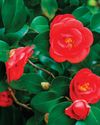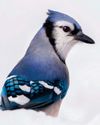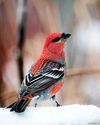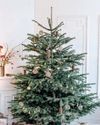Invite More Butterflies
Birds & Blooms
|August/September 2019
Colorful, easy-to-grow plants for a nectar-packed garden.

1 Butterfly weed
ASCLEPIAS TUBEROSA, ZONES 3 TO 9
Distinctive clusters of bright orange flowers are a must-stop destination for butterflies, especially monarchs and black swallowtails. After all, it didn’t get its name for nothing. Butterfly weed grows 1 to 2 ½ feet tall and blooms from mid- to late summer. It tolerates dry soil and prefers plenty of sunshine.
Why we love it: The showy bright orange blooms are deer resistant and drought tolerant, and butterfly weed is easy to grow from seed and super resilient—a major win!

2 Cleome
CLEOME HASSLERIANA, ANNUAL
This old-time garden favorite, also called spider flower, gets its common name from the long and threadlike flower stamens and elongated seedpods. Cultivars come in white, pink, rose or purple flowers and quickly reach 5 to 6 feet tall. Newer cultivars, between 12 and 18 inches tall, are suitable for containers.
Why we love it: Cleome is a bright, resilient flower that readily self-seeds new generations. In addition to butterflies, bees and hummingbirds also love it.

3 Pentas
PENTAS LANCEOLATA, ANNUAL
Esta historia es de la edición August/September 2019 de Birds & Blooms.
Suscríbete a Magzter GOLD para acceder a miles de historias premium seleccionadas y a más de 9000 revistas y periódicos.
¿Ya eres suscriptor? Iniciar sesión
MÁS HISTORIAS DE Birds & Blooms

Birds & Blooms
Ready to Fly
For birders, spring migration is something to look forward to and be celebrated, but how do birds know when it's time to begin their travels?
2 mins
December 2025 / January 2026

Birds & Blooms
COOL AS A Camellia
When temperatures drop, most plants wait out the chilly months, but camellias put on a show. Discover how to have these beauties thriving in your yard.
2 mins
December 2025 / January 2026

Birds & Blooms
Festive Feathers
Readers braved the winter chill to capture these snowy snapshots of the season's most beautiful birds
2 mins
December 2025 / January 2026

Birds & Blooms
Winter Gems
With raspberry-red feathers, pine grosbeaks cheer up chilly landscapes wherever they land
2 mins
December 2025 / January 2026

Birds & Blooms
the mysterious lives of NIGHTHAWKS
These creatures of contradiction aren't hawks and aren't the most active at night, but they are worth knowing
3 mins
December 2025 / January 2026

Birds & Blooms
Adventure Awaits
Pack your bags, get on board and find your next vacation destination in these captivating photos from far-flung travels
2 mins
December 2025 / January 2026

Birds & Blooms
It's All in the Needles
Get to know the greenery to identify these conifers
1 min
December 2025 / January 2026

Birds & Blooms
Christmas Tree Do's and Don'ts
These pro tips will help you get the most out of this classic holiday fixture
2 mins
December 2025 / January 2026

Birds & Blooms
Trailing Houseplants
Simple, easy-to-grow plants for hanging containers
3 mins
December 2025 / January 2026

Birds & Blooms
Better Off with Bats
Rethink the unsung heroes of the night and why you should support them
2 mins
October / November 2025
Translate
Change font size

